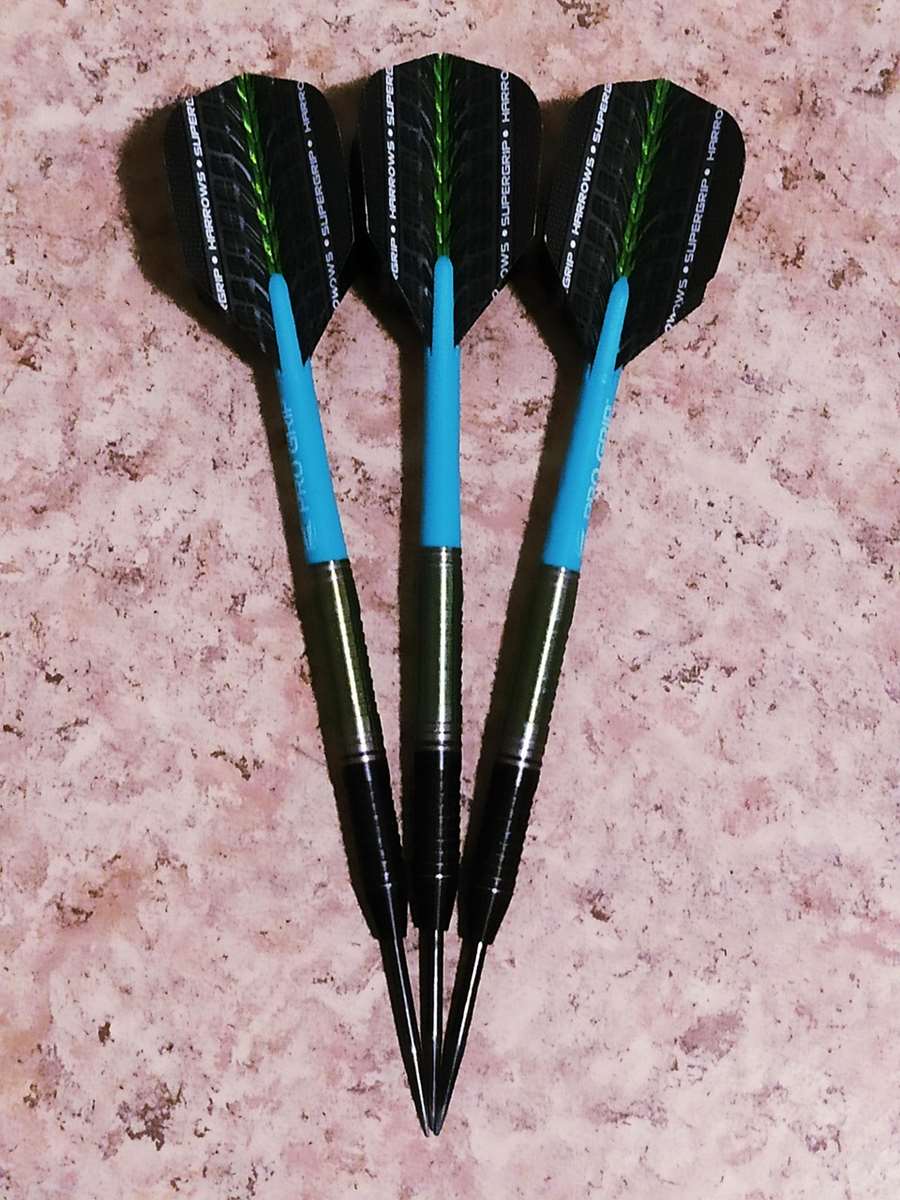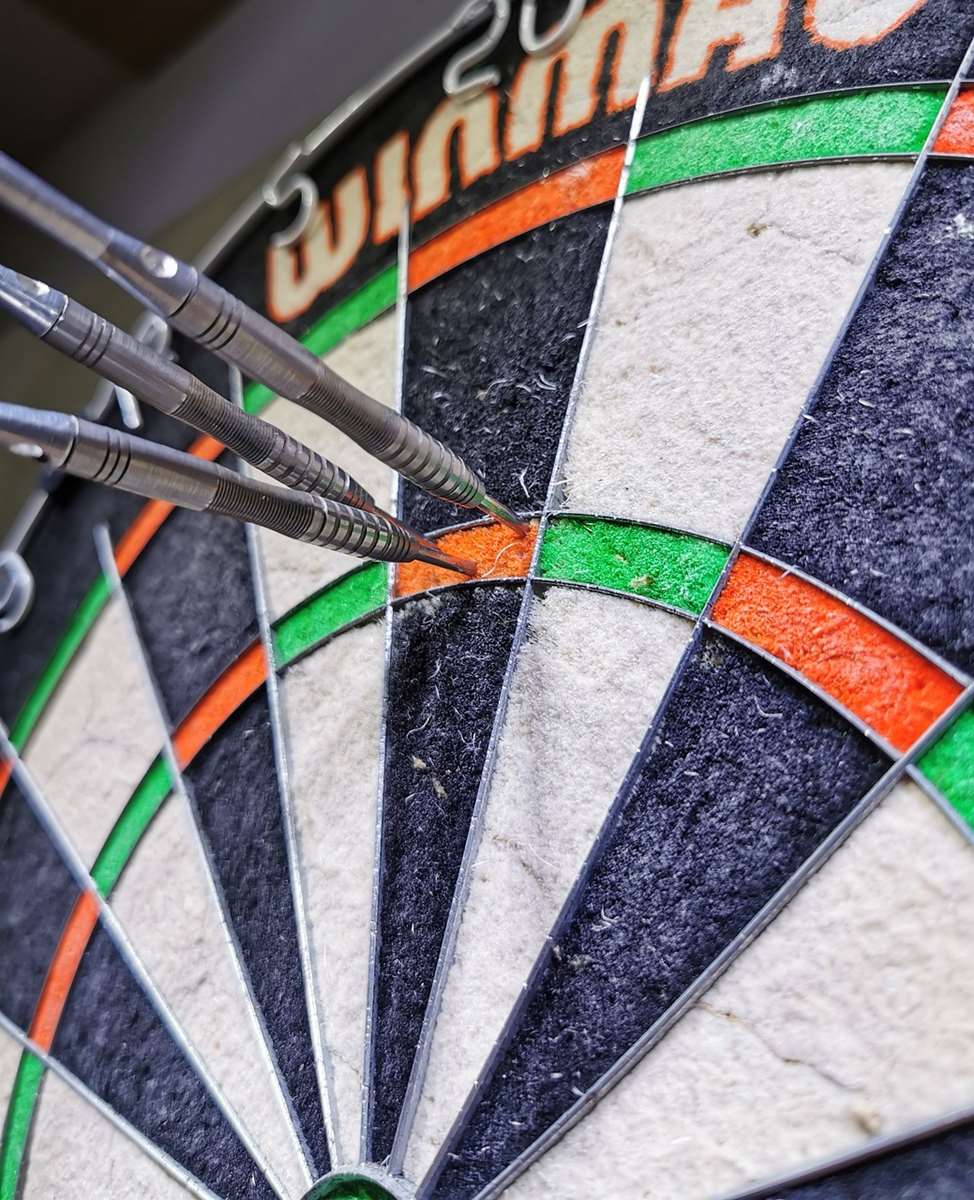Understanding darts scoreboard explained is crucial for enjoying and tracking your progress in the game; simply put, it’s how you know who’s winning! This article breaks down the traditional darts scoring system, explains common abbreviations and strategies, and provides helpful tips for accurate scorekeeping.
⚠️ Still Using Pen & Paper (or a Chalkboard)?! ⚠️
Step into the future! The Dart Counter App handles all the scoring, suggests checkouts, and tracks your stats automatically. It's easier than you think!
Try the Smart Dart Counter App FREE!Ready for an upgrade? Click above!
The Basics of a Darts Scoreboard Explained
The traditional darts scoreboard explained is usually a whiteboard or chalkboard where players’ scores are tracked, typically starting at 501 or 301. Each player or team begins with the selected score, and the points scored from each throw (three darts per turn, called a ‘visit’) are subtracted from their total. The ultimate goal is to be the first to reduce your score to exactly zero, ending with a double.

Here’s a breakdown of the key components and rules to better understand the darts scoreboard explained:
- Starting Score: Usually 501 or 301. 501 is the most common for serious games.
- Scoring Zones: The dartboard is divided into numbered sections from 1 to 20, along with a bullseye (50 points) and an outer bull (25 points). There are also double and triple rings. A dart landing in the double ring counts as double the number of that section, and a dart in the triple ring counts as triple the number.
- Turns: Each player throws three darts per turn.
- Scoring: The points from each dart are added together for the turn, and that total is subtracted from the player’s remaining score.
- Busting: If a player scores more points than needed to reach zero, or if their score goes to one (1), their turn is over, and their score reverts to what it was at the beginning of that turn. This is called “busting.”
- Double Out: The final dart thrown to reach zero must be a double. This adds a layer of strategy to the game, as players need to set themselves up to finish on a double.
Decoding Darts Scoreboard Abbreviations
To efficiently track scores, especially during fast-paced games, various abbreviations are used on the scoreboard. Understanding these abbreviations is essential for keeping up with the game, whether you are playing or just watching. Some players find a darts score template useful, but knowing the codes is critical, too.
- S: Single (e.g., S20 means single 20, worth 20 points).
- D: Double (e.g., D20 means double 20, worth 40 points).
- T: Triple (e.g., T20 means triple 20, worth 60 points).
- B or Bull: Bullseye (worth 50 points).
- OB or Outer Bull: Outer bull or single bull (worth 25 points).
- MPR: Missed Playing Requirement (used in Cricket darts variant).
For example, if a player throws a triple 20, a single 5, and a double 10, the notation on the scoreboard might look like: T20, S5, D10 (60 + 5 + 20 = 85). This means 85 would be subtracted from their current score. Many players are now turning to a digital dart score app instead of using traditional notation.

Strategic Scorekeeping: Tips for Accuracy and Efficiency
Accurate scorekeeping is vital for a fair and enjoyable game. Here are some tips to ensure you’re tracking scores effectively and efficiently:
- Designate a Scorer: Have one person dedicated to keeping score to minimize errors.
- Call Out Scores Clearly: The player should clearly announce the score of each dart as it lands.
- Use a Clear Notation System: Adopt a consistent notation system and stick to it.
- Double-Check Subtractions: Always double-check your math to avoid mistakes.
- Consider a Darts Scoring App: For ease and accuracy, especially with complex games like around the world or cricket, a darts scoring app can be a game-changer.
Thinking about throwing a dart? Consider these dart quotes for some added inspiration. dart quotes
Common Darts Games and Scoreboard Variations
While 501 and 301 are the most common darts games, there are several other variations, each with its own unique scoring rules and scoreboard requirements. Two popular examples are:
- Cricket: This game involves “closing out” numbers by hitting them three times. The numbers used are 20, 19, 18, 17, 16, 15, and the bullseye. The scoreboard tracks which numbers each player has closed and their points accumulated on those numbers.
- Around the World: Players must hit each number on the board in sequence, from 1 to 20 (and sometimes including the bullseye). The scoreboard simply tracks which number each player is currently aiming for.
Knowing how to adapt the darts scoreboard explained for different game types adds another layer of enjoyment to the sport. For instance, in Cricket, you might use columns to track each player’s progress on the key numbers (20, 19, etc.).

Advanced Scoreboard Strategies: Setting Up Finishes
Beyond simply tracking the score, a good darts player also uses the scoreboard to plan their strategy and set up finishes. This involves thinking several throws ahead and calculating which combinations of scores will leave you with a favorable double to aim for.
Here are some common strategies:
- Knowing Your Outs: Memorizing common checkouts (the combinations of scores needed to reach zero on a double) is crucial.
- Leaving a Double: Aim to leave yourself with a double that you are comfortable hitting.
- Avoiding Busts: Carefully calculate your throws to avoid going over your target score or landing on one (1).
- Playing the Percentages: Sometimes, even if you can’t leave yourself with your preferred double, it’s better to leave a less favorable double than to risk busting.
Using the scoreboard strategically is a key element of successful darts play. For example, experienced players often aim for the triple 20 (T20) to quickly reduce their score, but will switch to other targets if it improves their chances of setting up a double finish. Players who watch the dart pdc final closely pick up these strategies quickly. Thinking ahead and planning your throws based on the current score is a crucial element in mastering the game. It’s also important to understand the darts max length guidelines to ensure fair play.
Choosing the Right Darts Scoreboard
While traditional chalkboards or whiteboards are perfectly functional, several modern alternatives offer enhanced features and convenience. Electronic darts scoreboards explained are now widely available and offer automatic scoring, game variations, and even player statistics. These boards eliminate the need for manual scorekeeping, reducing errors and speeding up gameplay. These scoreboards are a good option if you also have decided which dartboard light will work best for you.
Here’s a comparison of the different types of scoreboards:
- Chalkboard/Whiteboard: Classic and affordable, but requires manual scorekeeping and can be messy.
- Electronic Scoreboard: Automatic scoring, game variations, player statistics, but more expensive.
- Darts Scoring App: Convenient and portable, but requires a smartphone or tablet.

Troubleshooting Common Scorekeeping Issues
Even with the best intentions, mistakes can happen when keeping score. Here are some tips for resolving common issues:
- Incorrect Subtractions: If you suspect an error, retrace the last few turns and double-check the calculations.
- Disputed Scores: If there’s a disagreement about a dart’s position, try to reach a consensus based on the best available evidence (e.g., the dart’s proximity to the wire).
- Busting Errors: If a player busts but the scorer doesn’t notice, the player should immediately point out the error.
The key to resolving scorekeeping issues is clear communication and a willingness to work together to find a fair solution. A little bit of common sense goes a long way. Understanding all that we have covered about darts scoreboard explained will make this process even easier.

Practicing with a Darts Scoreboard
The best way to master darts scoreboard explained is to practice! Set up a scoreboard and play regular games, focusing on accuracy and strategic planning. Experiment with different checkout combinations and track your progress over time. The more you practice, the more comfortable you will become with the scoring system and the better you will be at using the scoreboard to your advantage.
Furthermore, consider trying specific practice routines, such as aiming for specific doubles or triples repeatedly, or playing against yourself to simulate game situations. Over time, your familiarity with the game and understanding of darts scoreboard explained will grow significantly.
Conclusion
Understanding how to use a darts scoreboard explained is fundamental to enjoying and succeeding in the game of darts. From grasping the basic scoring system and decoding abbreviations to mastering advanced strategies and choosing the right scoreboard, the knowledge shared in this article will empower you to become a more confident and skilled darts player. So, grab your darts, set up your scoreboard, and start practicing! Ready to up your darts game? Browse our selection of high-quality dartboards and accessories today!
Hi, I’m Dieter, and I created Dartcounter (Dartcounterapp.com). My motivation wasn’t being a darts expert – quite the opposite! When I first started playing, I loved the game but found keeping accurate scores and tracking stats difficult and distracting.
I figured I couldn’t be the only one struggling with this. So, I decided to build a solution: an easy-to-use application that everyone, no matter their experience level, could use to manage scoring effortlessly.
My goal for Dartcounter was simple: let the app handle the numbers – the scoring, the averages, the stats, even checkout suggestions – so players could focus purely on their throw and enjoying the game. It began as a way to solve my own beginner’s problem, and I’m thrilled it has grown into a helpful tool for the wider darts community.